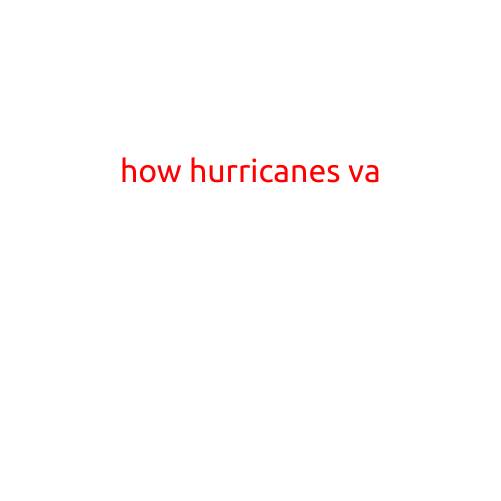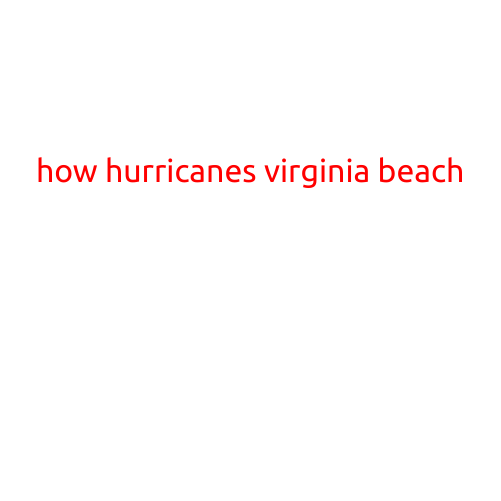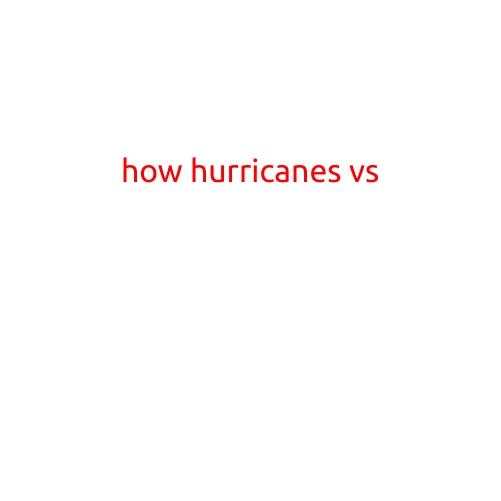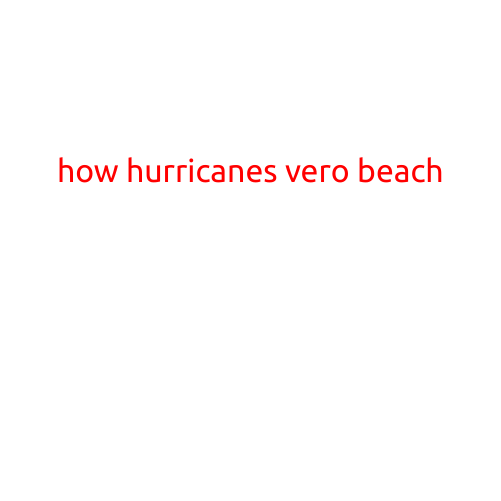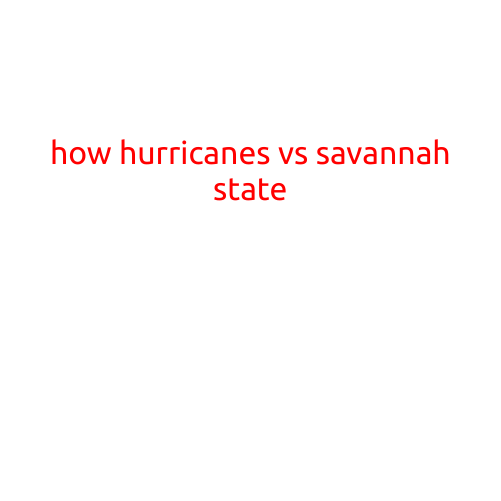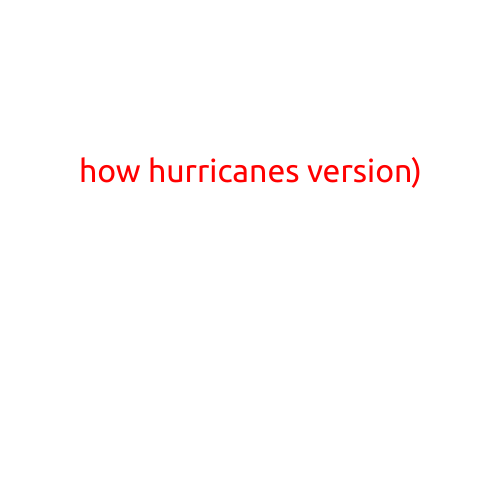
How Hurricanes Form: Understanding the Science Behind These Powerful Storms
Hurricanes are one of the most destructive and feared natural disasters, responsible for widespread damage, flooding, and loss of life. These powerful storms continue to pose a significant threat to coastal communities around the world. But how do they form, and what factors contribute to their strength and track? In this article, we’ll delve into the science behind hurricane formation and explore the key players that influence their development.
The Crucial Ingredients for Hurricane Formation
For a hurricane to form, several specific conditions must be met:
- Warm ocean waters: Hurricanes need warm ocean waters (at least 26.5°C or 80°F) to a depth of about 50 meters (164 feet) to sustain themselves. This warm water heats the air above it, causing it to rise and create an area of low pressure.
- Moisture: Hurricanes require high levels of atmospheric moisture to maintain their strength. Warm air is capable of holding more moisture than cold air, and hurricanes rely on this moisture to fuel their growth.
- Low pressure: Hurricanes thrive in areas of low atmospheric pressure. As the air rises near the surface, it creates an area of lower pressure near the center of the storm.
- Wind shear: In order for a hurricane to strengthen, there must be minimal wind shear (a change in wind direction and speed with height). High levels of wind shear can disrupt the storm’s structure and prevent it from intensifying.
- Disturbances: Hurricanes often form from tropical disturbances, which are areas of low pressure that develop over warm ocean waters. These disturbances can strengthen into tropical depressions, which eventually become hurricanes if the conditions are right.
The Life Cycle of a Hurricane
Once a hurricane forms, it will go through several stages as it develops and matures.
- Tropical depression: The initial stage of a hurricane, characterized by maximum sustained winds of 38 km/h (24 mph) or less.
- Tropical storm: Winds increase to 65 km/h (40 mph) or more, marking the transition from a depression to a storm.
- Hurricane: The storm becomes a hurricane when sustained winds reach 119 km/h (74 mph) or more.
- Category 1: The lowest category of hurricane, characterized by winds of 119-153 km/h (74-95 mph).
- Category 2-5: Hurricanes are classified based on their wind speed, with Category 5 being the strongest, with winds of 252 km/h (157 mph) or higher.
- Dissipation: Eventually, hurricanes will weaken and dissipate, typically due to a lack of warm ocean waters or increased wind shear.
Factors Influencing Hurricane Strength and Track
Several factors can influence the strength and track of a hurricane, including:
- Sea surface temperatures: Warmer ocean waters can fuel stronger hurricanes.
- Upper-level winds: Jet stream winds and trade winds can steer and strengthen hurricanes.
- Land interaction: Hurricanes can weaken significantly when they make landfall, as they interact with land-based weather patterns.
- Atmospheric conditions: High levels of atmospheric moisture and low wind shear can contribute to hurricane strengthening.
Conclusion
Hurricanes are complex and powerful storms that require a precise combination of environmental conditions to form. Understanding the science behind hurricane formation is crucial for predicting their behavior, issuing timely warnings, and developing effective mitigation strategies. By grasping the key factors that influence hurricane strength and track, we can better prepare for and respond to these devastating storms, ultimately saving lives and reducing the impact of these natural disasters.
